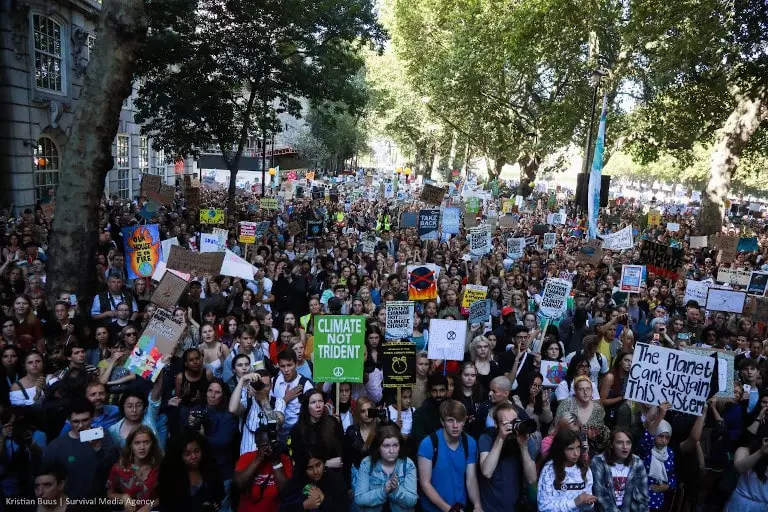
The Global Climate Strike has started
Today is the first day in the Global Climate Strike. A week (20th to 27th) of strikes and acts of protest called by the Fridays for Future movement, and which has been joined by numerous organizations, unions and people around the world with the aim of becoming the largest environmental protest in history, and achieve a radical shift in global environmental policies.
In August 2018, Swedish activist Greta Thunberg began missing class every Friday to protest in front of the Swedish parliament, demanding an immidiate response to the climate crisis. Since then more and more young people from all over the world have joined this protest every Friday in their respective countries.
Global mobilisation

Beginning the so-called “Week for Future”, Pacific Islanders will be the first to take the streets with demonstrations, events and strikes that will spread from East to West of the planet as the day progresses.
Although framed in a global action, the protests are expected to have numerous references to the local problems of each region.
Oceania
For example, Pacific island nations will emphasize the danger they face from rising ocean levels as a result of global warming.
In Australia, the government approval for the construction of a big coal mine in Queensland, which would also threaten the Great Barrier Reef, will be one of the recurrent messages in the dozens of protests called, which have been backed by the main unions.
Asia
On Asia, hundreds of protests in countries such as Indonesia, the Philippines, Bangladesh, Nepal and India have been called. India, that could be the world’s most populous country in 2027, was home to 15 of the 20 most polluted cities in the world in 2018.
The government of China, the world’s most polluting country, has not authorized any protests related to the global climate strike. Even so, it’s possible that groups of young activists may try to carry out clandestine protests.
Africa
Nigeria, Kenya, Senegal, Côte d’Ivoire, and the Democratic Republic of Congo are among the main African countries where protests and marches have been called against the construction of new fossil energy plants and demanding a transition to renewable energies.
In South Africa, a big march is planned in Johannesburg with the support of the country’s main trade unions.

America
The fires and uncontrolled deforestation of the Amazon foresy are still very present, and will be one of the key issues in the hundreds of protests that are expected today throughout Latin America. There are also scheduled demonstrations in countries that haven’t participated in climate protests in recent years, such as Cuba and Venezuela.
In the United States, Donald Trump’s fossil energy policies, his refusal to acknowledge the existence of climate change, and the announcement that he would withdraw the country from the Paris Agreement by 2020 have had activists on the warpath for months.
With more than 1,000 protests announced across the country and the news that New York public schools have given more than 1 million students the day off, the effects have already been felt in the campaign of the Democratic Party, whose 2020 presidential candidates are including many green measures in their programs to attract the vote.
Europe
From Armenia and Georgia, through Russia, Ukraine and Finland to the United Kingdom and Portugal. Today, more than 1,200 protest events are taking place all over Europe.
Germany, Europe’s largest economy, could witness the biggest mobilization of its recent history if participation forecasts are met. In the UK, major trade unions have called for a 30-minute break to protest.

Week for Future
According to the official Fridays for Future website, during this week there are more than 6000 protest events scheduled in 3100 cities of 168 countries. These figures only include the events that have been registered on their website as of today, so you can expect a greater number of events globally, being the 27th when the largest mobilizations have been called.
An unprecedented mobilizing power with which environmental groups seek, among other things, to influence the UN’s Climate Action Summit held on Monday 23 September in New York, as well as the Conference on Climate Change (COP25) that the UN will hold in Chile in December.
These two meetings will be a stress test to see if the demands of this Week for Future crystallize into concrete actions by the governments, and also a way to measure the success of a historic mobilization.
Events maps
You can find an event to participate near you using the Fridays For Future website or the Global Climate Strike website.